At over 6 million years old, US Grand Canyon is the most famous canyon in the world by far, even though it's not the deepest, nor the widest of them all!
As one of the 7 Natural Wonders of the World, the Grand Canyon is America’s most visited landmark. Millions of people from around the world visit the Canyon every year.
Though hiking trails are stunning, they are challenging. Even the most experienced hiker can expect some challenges the first time, but don’t let that stop you – the views are amazing and memories will be worth it.
Here are the best hikes in the Grand Canyon:
- Grand Canyon Rim To Rim
- Bright Angel Trail
- South Kaibab Trail
- North Kaibab Trail
- New Hance Trail
Best Grand Canyon Hikes
1. Grand Canyon Rim To Rim
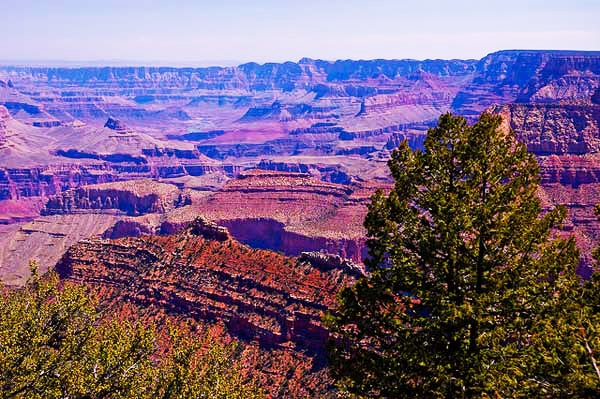
Photo by Bill Cheadle
- Area: Grand Canyon, from North Rim to South, or from South Rim to North
- Permit: Not required (unless you choose a longer route and stay overnight)
- Difficulty: For experienced hikers
- Distance: 24 miles for Bright Angel and 21 miles for South Kaibab
- Elevation: one mile up, one mile down
- Time Hiking: from 2 hours to 5 days (depending on your preference)
Rim Trail follows the rim of the canyon and offers stunning views of the landscape. It's a relatively easy trail that can be accessed from several points along the South and North Rims, and hikers can choose to do a shorter section or the entire 13-mile (21 km) length of the trail.
North Kaibab to Bright Angel: This trail is a 24-mile hike and could be done in one day. It's best to begin the hike incredibly early and choose the North Rim as your starting point. While you should always carry over enough water, there are sections along the trail where you can get water.
South Kaibab to North Kaibab: This trail is a 21-mile hike and is very steep. There is also no water on this trail, so be sure to take more than enough with you. This well-maintained trail offers incredible vistas, although certain parts, like the base of the canyon known as The Box are going to be particularly challenging in the summer due to heat exposure.
Best Time to Hike
June is the ideal time for hiking in the Grand Canyon, as it has the lowest rainfall and is not as warm as July and August. This is especially important for this trail, as “the box” can be very unpleasant during summer.
Accommodation
The South Rim has multiple lodges including the Bright Angel Lodge. There is also the historical hotel, EL Tovar. Accommodation can be pricey; budget accordingly.
The North Rim also has two accommodation options: Grand Canyon Lodge and Jacob Lake Inn. Unlike other lodges, Jacob Inn is open all year-round.
2. Bright Angel Trail

Photo by Andrey Sulitskiy
- Area: South Rim, Grand Canyon
- Permit: Not required
- Difficulty: Moderate
- Distance: First Resthouse (1,5 miles); second Resthouse (3 miles); Indian Garden (4,8 miles)
- Elevation: first Resthouse (1,100ft); second Resthouse (2,100ft); Indian Garden (3,000ft)
- Time Hiking: From 30 minutes to 2 hours (there and back), depending on your pace and whether you go to the Indian Garden.
This scenic trail features smooth terrain, accessible water and rangers. It takes you into the ancient coral reefs of Kaibab Limestone, and offers phenomenal views of the Indian Garden campground, as well as Plateau Point.
The Bright Angel is a fascinating trail, offering evidence of ancient, and recent cultures, passing through this trail. It is a generally pleasant hike as there are plenty of shaded areas, but those summer afternoons can become a bit uncomfortable. Fortunately, there is plenty of water and shaded rest-houses on the way.
Best Time to Hike
This trail is open to hikers all year round and is generally very pleasant due to the smooth terrain and ample shade. However, caution and proper gear is needed in winter.
Accommodation
The Bright Angel Lodge is available all year-round and is conveniently located only feet from the rim. This rustic lodge is made up of cabins and lodge rooms, two restaurants, and the front room boasts a fireplace for those cold winters. Alternatively, you could stay in any of the other lodges on the South Rim: El Tovar Hotel, Kachina Lodge, Maswik Lodge, Thunderbird Lodge and Yavapai Lodge. Check Tripadvisor for the places with best reviews!
Bright Angel Trail Tips
- The trail is known to ice over in winter; ensure you wear the appropriate hiking boots.
- Keep an ear out for the fascinating array of languages that will be spoken on this popular trail by your fellow travelers; you may end up learning some French or German along the way.
3. South Kaibab Trail
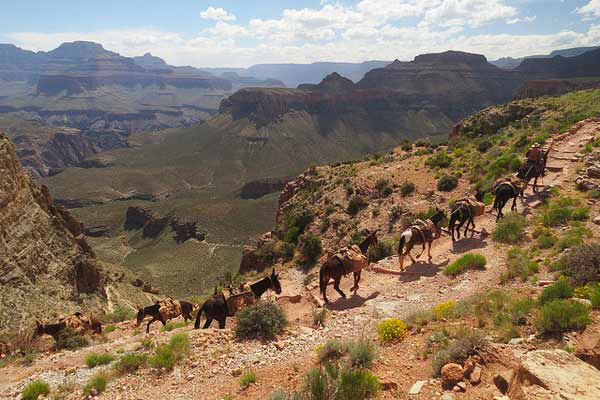
Photo by Elzbieta T.
- Area: South Rim, Grand Canyon
- Permit: Not required
- Difficulty: Moderate to Difficult (depends on the weather)
- Distance: Cedar Ridge (3 miles); Skeleton Point (6 miles); The Tipoff (8,8 miles); Bright Angel Compound (14 miles)
- Elevation: Cedar Ridge (1,140ft); Skeleton Point (2,040ft); The Tipoff (3,260ft); Bright Angel Compound (4,780ft)
- Hiking Time: 1 day or 2 hours – 12 hours (there and back)
The South Kaibab Trail begins at Yoki Point and is steeper than the Bright Angel, so be prepared with plenty of water and sunscreen. The spectacular vistas and stunning scenery along this trail are not without cost. The trail descends to the Colorado River over the course of 7 miles (11 km), with several overlooks.
Although, the trail may be similar to the Bright Angel Trail, but it does not provide much cover from the sun and there is no water fountains on route. You will need to ensure that you have more than enough water and appropriate protection against the harsh summer sun.
Best Time to Hike
The trail is open to hikers all year round, and winter hikes are possible. While most would prefer to hike in summer, it is best to steer clear of this trail in the heart of summer, as heat stroke is quite possible without proper protection.
Accommodation
El Tovar Hotel seems to be the best accommodation option on the South Rim, although there are numerous other lodges available. The El Tovar is a historical landmark and is a full-service hotel with a dining room, cable TV, full-bath and room service.
South Kaibab Trail Top Tips
- It is better to avoid this trail in July and August, as temperatures can get incredibly brutal and there might be heavier rains too.
- It is essential to bring your own water as this trail has no refills available. Always pack more than you think you’ll need, as it can get very hot on this trail.
- Wear a hat that protects your face, neck and shoulders from the sun.
4. North Kaibab Trail
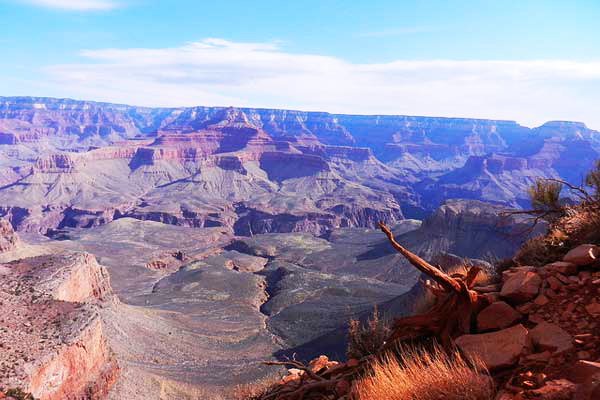
Photo by Filkferendi
- Area: North Rim, Grand Canyon
- Permit: Not required
- Difficulty: Moderate to Difficult
- Distance: Coconino Overlook (0,75 miles, one way); Supai Tunnel (2 miles one way); Roaring Springs (4,7 miles one way)
- Elevation: Supai Tunnel (1,400ft); Roaring Springs (3,000ft)
- Time Hiking: From 30 minutes to 4 hours (there and back)
The North Kaibab Trail is the only maintained trail that descends to the Colorado River from the North Rim. It's longer than the Bright Angel and South Kaibab trails, with a total distance of 14.3 miles (23 km) to reach the river. It passes through a variety of ecosystems and several waterfalls. This trail is also challenging, with steep descents and ascents, so hikers should be prepared with proper gear and a good level of fitness.
It is the prefect cool contrast to South Kaibab’s heat in the heart of summer. The North Rim is also incredibly lush and vibrant with vegetation.
This trail starts out with a bit of a steep drop, taking you through ferns, aspen and firs. Once you reach the Coconino Overlook, the views of the Bright Angel Canyon are incredibly stunning. You can take a break here and just enjoy the spectacular vista.
A little further away is the Supai Tunnel, and you can turn around here and head back. If you want to make a day of it, you could continue to the magnificent Roaring Springs, and turn around there.
Best Time to Hike
The cooler Northern Rim is great for those hot summer days, when the Southern Rim is too dangerous to hike. But note that the North Rim is only open from mid-May to Mid-October.
Accommodation
Unlike the South Rim, the North Rim only has two accommodation options: Grand Canyon Lodge, and Jacob Lake Inn.
Grand Canyon Lodge is the only accommodation within the park, as Jacob Lake Inn is located along Highway 67, roughly 45 miles from the North Rim. The Grand Canyon Lodge is only open from May to October while Jacob Lake Inn is open all year-round. The lodge offers motel rooms and cabins, and all lodging has a private bathroom.
Jacob Lake Inn may be the better option, as it offers additional services such a restaurant, bakery, gas station, Native American art gallery, convenience store and a small gift shop. Accommodation ranges from hotel rooms, motel rooms and cabins.
North Kaibab Trail Hike Tips
- While there is water available along this trail, always pack over enough water when hiking, even if the trail isn’t known to be particularly hot. Staying hydrated is incredibly important.
- Camping is only available 7 miles down the rim, at Cottonwood campground, or on the rim itself.
5. New Hance Trail
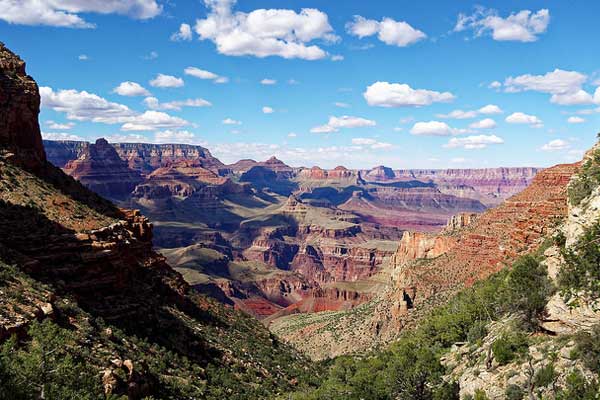
Photo by John and Jean Strother
- Area: South Rim, Grand Canyon
- Permit: Only for overnight camping
- Difficulty: Difficult. Some previous experience in Canyon hiking is recommended
- Distance: Red Canyon overlook (2 miles one way); Colorado River (6,5 miles one way)
- Elevation: Red Canyon overlook (2,000ft); Colorado River (4,400ft)
- Time Hiking: From 2 hours to 5 hours (there and back)
This is a very secluded and rugged trail, and you won’t see many other hikers. The unmarked trailhead alone might pose some difficulty finding, and therefore those who are not experienced in Canyon hiking should not try this trail alone. Find a good guide and then head for a great short adventure.
This is a very hands-on (and elbows, knees and backside) kind of trail. You won’t just be hiking, and it will really test your endurance. Be sure to take over enough water and food along, and don’t push yourself too hard.
While this trail is difficult with its boulders and rugged terrain, it offers complete solitude and mesmerizing views. If you have some experience and a good fitness level, this trail is a great choice. It even offers the most wonderful river rapid beach camps – if you have what it takes to find it.
Best Time to Hike
It is generally best to avoid the South Rim and Inner Canyon during the heart of summer, as temperatures can become dangerously high.
Accommodation
The South Rim offers 6 accommodation options: Bright Angel Lodge, El Tovar Hotel, Kachina Lodge, Maswik Lodge, Thunderbird Lodge and Yavapai Lodge.
The Bright Angel Lodge and El Tovar Hotel are the most popular options, and El Tovar is said to be the best option on the South Rim.
New Hance Trail Tips
- Camping is available at the river and Mid Canyon.
- Avoid this hike from June to August, as Mid Canyon can be dangerously hot.
Grand Canyon Overview
Visiting the Grand Canyon is at the top of many bucket lists. It is a stunning landscape with a rich history. It was formed over millions of years by the erosion of the Colorado River, which still flows through the canyon today. The rocks that make up the canyon walls are estimated to be between 1.2 and 2 billion years old.
Stretching for 277 miles (446 km) long, up to 18 miles (29 km) wide, and over a mile (1.6 km) deep, the Grand Canyon is home to a diverse array of plant and animal species, including over 70 species of mammals, 250 species of birds, and 25 species of reptiles.
The Grand Canyon has a rich human history, with evidence of Native American occupation dating back over 12,000 years. Today, the Hualapai, Havasupai, and Navajo tribes still call the Grand Canyon region home.
The Grand Canyon has several notable landmarks, including the famous Bright Angel Trail, the Desert View Watchtower, and Phantom Ranch, a historic lodge at the bottom of the canyon.
It is also known for its stunning night skies, with thousands of stars visible on clear nights. In fact, the Grand Canyon is designated as an International Dark Sky Park, making it an ideal destination for stargazing.
One of the great things about Grand Canyon National Park, is that when you pay the entrance fee, you receive a permit that is valid for 7 days. You could make an entire week of it, and only pay the entrance fee once.
Grand Canyon Quick Facts
- Grand Canyon is bigger than Rhode Island
- First successful ascent of the canyon was by John Wesley Powell in 1869 and the first solo hike across the canyon by Colin Fletcher in 1963.
- It has its own climate
- As one of the Seven Natural Wonders of the World it attracts over 6 million visitors per year.
- It takes 5 hours to drive from the South Rim to the North Rim.
- From 1906 the area is known as the Grand Canyon Nature Reserve.
- The South Rim is open all year; the North Rim is open from 15th May to 15th October.
- UNESCO World Heritage Site
- Permits are not required for day hikes but are required for overnight hikes.
- Reservations are not needed to visit the Grand Canyon; however, it is required for accommodation at any of the lodges or campsites.
Topography
The Grand Canyon forms part of the Colorado River basin and was developed around 6 million years ago.
The Canyon supports three primary sets of rock: Layered Paleozoic Rocks at the top, Grand Canyon Supergroup Rocks and Vishnu Basement Rocks. Each of these types of rock contain various other rock types, such as Limestone, Granites and more.
Volcanic rocks are thought to be the youngest in the Canyon, occurring roughly between 100,000 to 3 million years ago.
Rocks are not the only thing to be found here. The Canyon also has lots of vegetation, and its North Rim is said to be particularly lush and cool, while the South Rim has less shaded areas and is significantly hotter.
Wildlife and Plants
There are around 90 mammal species that have been recorded, including Mountain Lion and the rarely seen Black Bear here. Due to the 8,000ft (2,400m) elevation change, the plant life is incredibly diverse, with species of vascular plants, fungi, moss and lichen. There are 2,163 plant species from the Colorado River to the top of the North Rim.
The different sections of the Canyon have different types of vegetation. Both the South and the North Rim have forests growing on them, while the eastern section is covered in Sonoran Desert vegetation, and the western part has Mojave Desert attributes.
Beware of bears
Day hiking does not require a permit but if you are carrying food then bear-resistant storage containers are a must and it is always advisable to carry bear spray.
Regional Map
Grand Canyon National Park is in Northern Arizona, United states. The park is divided into two sections, each with their own hiking trails and entrances:
- South Rim: this is the most popular section of the Grand Canyon due its easy accessibility.
- North Rim: while this rim is not as popular, nor as accessible, it offers lush vegetation and is perfect for those hot summer days.
While the visitors’ center and the National Geographic Center do offer maps, it is best to prepare in advance. We recommend this detailed National Geographic map on the North and South Rims of the Grand Canyon to help you prepare for your trip.
Recommended Guidebook
For a comprehensive guide on what to do and see in the Grand Canyon, we recommend Grand Canyon: The Complete Guide: Grand Canyon National Park by James Kaiser. The book includes chapters on History, Geography and Wildlife, as well as detailed maps.
Hiking Grand Canyon FAQ
How can I go hiking down Grand Canyon?
If you're interested in hiking to the bottom of the Grand Canyon, there are several different routes you can take. The most popular route is the Bright Angel Trail, which is a well-maintained trail that starts on the South Rim and descends to the Colorado River. Another popular option is the South Kaibab Trail, which is steeper and more exposed but offers stunning views of the canyon. No matter which route you choose, it's important to be prepared for the challenging hike down and back up. Make sure you have plenty of water, snacks, and sunscreen, and consider hiring a guide or joining a tour group if you're not an experienced hiker.
Do I need any Grand Canyon hiking permits?
Yes, you do need a permit to hike to the bottom of the Grand Canyon. The National Park Service requires all overnight hikers to obtain a backcountry permit, which can be obtained by submitting an application online or in person at the Backcountry Information Center on the South Rim or at the visitor center on the North Rim. These permits are highly competitive, especially during the peak hiking season (May-September), so it's recommended that you apply well in advance. Additionally, day hikers do not need a permit, but they should still be prepared with proper gear and knowledge of the trail.
However, hiking in the Grand Canyon is free, you only need to pay the park entrance fee:
What good Grand Canyon hiking tours are there?
There are many excellent Grand Canyon hiking tours available, ranging from day hikes to multi-day backpacking trips. These tours can be a great option for those who want a guided experience, as well as for those who want to learn more about the history and geology of the area.
What Grand Canyon hiking tours are there?
There are many excellent Grand Canyon hiking tours available, ranging from day hikes to multi-day backpacking trips. These tours can be a great option for those who want a guided experience, as well as for those who want to learn more about the history and geology of the area. Some popular tour operators include Grand Canyon Conservancy, Wildland Trekking, and REI Adventures.
What are best hiking guides Grand Canyon?
When it comes to the best hiking guides for the Grand Canyon, there are a few key things to look for. First, you'll want to find a guide who is experienced and knowledgeable about the area. They should be able to help you plan a safe and enjoyable hike, and should be able to answer any questions you have about the Grand Canyon's history, geology, and wildlife. Some top-rated Grand Canyon hiking guides include Grand Canyon Conservancy Field Institute, All-Star Grand Canyon Tours, and Four Season Guides.
Are Grand Canyon hikes difficult?
The hikes range from moderate 2-hour walks to the very difficult multi-week trips. Certain trails are also only recommended for those with experience in Canyon hiking. Keep in mind, even the easiest trail requires a good fitness level.
Whether you’re going for a day hike or are planning to stay overnight, you should always have more than enough water and food with you, as well as extra clothing and a basic first aid kit, in case of emergencies. For more details on what to pack for a multi-day hike see our detailed guide.
When is the best time to hike in Grand Canyon?
The Grand Canyon is best visited from April to August. The summer months are when the Canyon is most beautiful. Although, be aware that certain hiking trails should be avoided in July and August, and Mid Canyon is especially dangerous during this time due to extreme heat.
The popular Bright Angel Trail, and the North Kaibab Trail are the best trails for summer, as they offer plenty of shade and are not as hot.
Is there a risk of altitude sickness?
Yes. It is particularly possible on the South Rim (7,000ft altitude). Avoid dehydrating and take it easy whenever you reach a new altitude.
Altitude sickness is a very serious condition. Don’t push yourself when you are changing altitudes and don’t hike alone. While hiking alone may be tempting, some altitude sickness symptoms are only noticeable to others. Having another person with you is a good idea.
What hiking gear do I need?
This depends on what trail and the season. It also depends if you’ll be hiking overnight or just for the day.
Generally, for all trails and seasons, you need a backpack filled with more than enough water and food, a change of clothing (preferably warm) and a basic first aid kit. Proper hiking boots, sunscreen and a sunhat that covers your head, neck and shoulders is also essential.
Wear long socks and trousers and tuck your pant legs into your socks or boots to prevent insects, snakes or scorpions from crawling up your legs.
To help you plan and prepare for your hike, we recommend reading my gear section and Packing list.
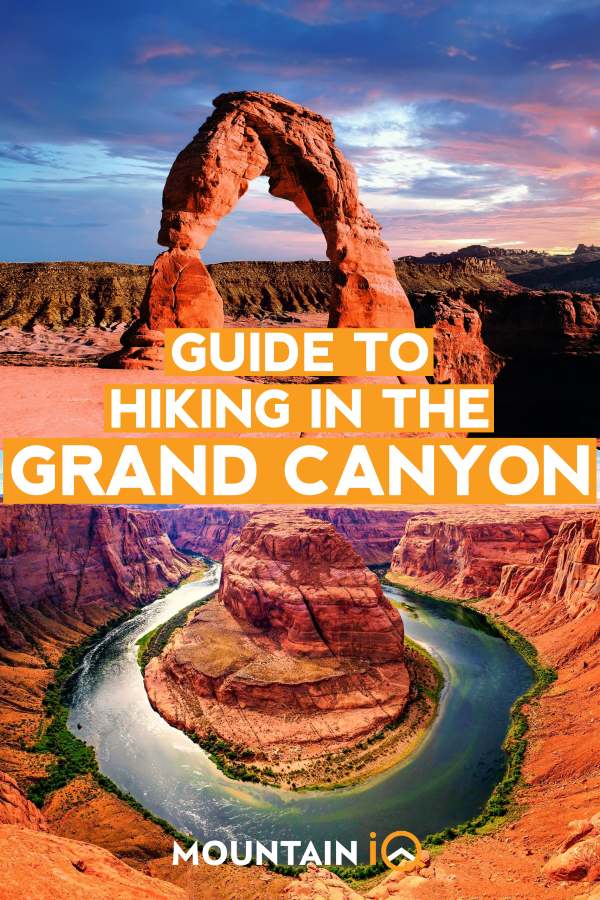
Further Reading
We recommend you check out the Havasupai Falls in the Grand Canyon. You can find the full guide on the best time to hike this trail here.
Browse more US National Park hikes
See our picks for the Best Hikes in America, or check out these popular hikes.

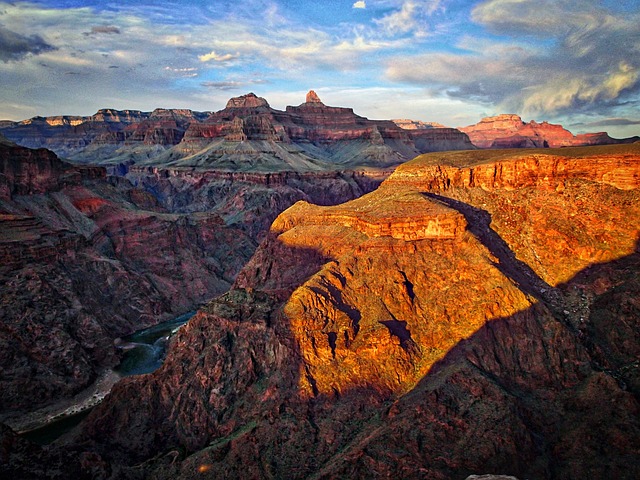
![Grand Canyon, North and South Rims [Grand Canyon National Park] (National Geographic Trails Illustrated Map)](https://m.media-amazon.com/images/I/419Y-ycyVUL.jpg)
